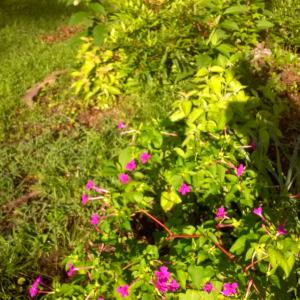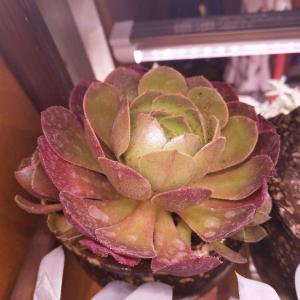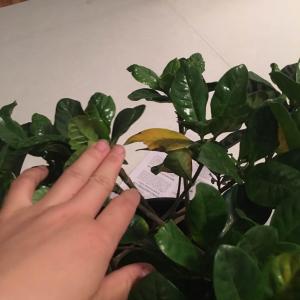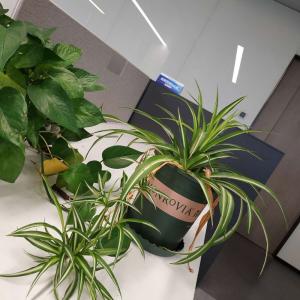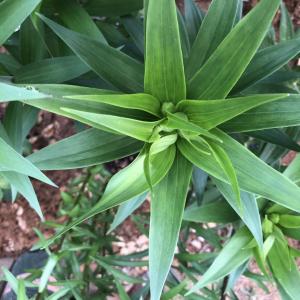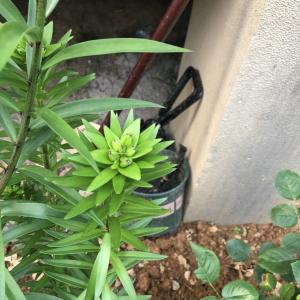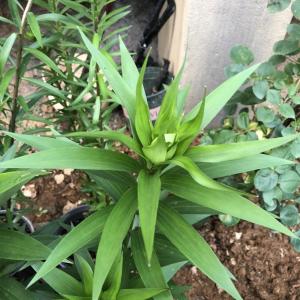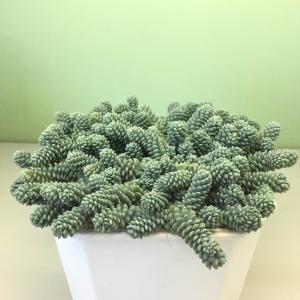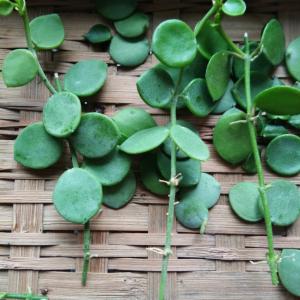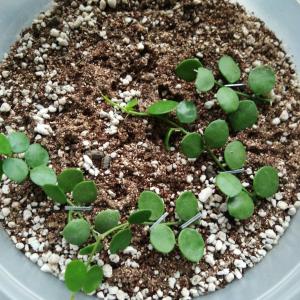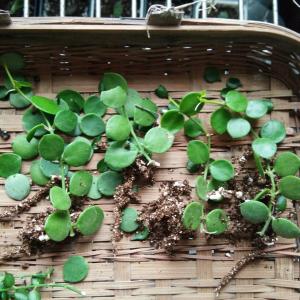文章
Miss Chen
2018年05月22日

Description: This herbaceous perennial plant is about 3½-8' tall, branching occasionally. The stems are often 4-angled and furrowed; they are slightly hairy or glabrous. The opposite leaves are up to 7" long and 3½" across (excluding the petioles), becoming somewhat smaller as they ascend the stems. These leaves are medium to dark green, cordate-ovate to ovate in shape, serrated along their margins, thin-textured, and largely hairless, except for some short pubescence along the undersides of their veins. The slender petioles are up to 2½" long; they are light green to red and glabrous to slightly hairy. The upper stems terminate in elongated panicles of flowers up to 1' long. Each panicle is somewhat cylindrical in shape, consisting of an erect central stalk (rachis) with short lateral branches that are widely spreading to ascending. Both the central stalk and lateral branches are light green; the latter also have short glandular pubescence, and they are slender and wiry. There are individual bracts (green, linear in shape, and up to 1" in length) that become progressively smaller as the panicle branches.
Individual flowers are about 8 mm. (1/3") long and short-cylindrical in shape; each flower has a short-tubular green calyx with 5 blunt teeth and a corolla with 5 rounded lobes. The exterior of the corolla is dull green, while its interior is predominantly reddish brown. Each corolla has a pair of upper lobes that function as a hood, 2 short lateral lobes, and a lower lobe that curves downward. All of these lobes are reddish brown on the inside, except the lower lobe, which is greenish yellow. Appressed against the upper interior of this corolla, there is an infertile stamen that is reddish brown or purple. The 4 fertile stamens have yellow anthers; they are located toward the bottom of the corolla. The slender pedicels are a little longer than the flowers. The blooming period occurs from mid-summer to early fall, lasting about a month; only a few flowers are in bloom at the same time. Each flower is replaced by a 2-celled capsule that contains numerous tiny seeds. The root system is rhizomatous and knotty-tuberous.

Cultivation: The preference is medium shade to partial sun, moist to mesic conditions, and soil that is loose and loamy. The size of this plant can be highly variable, depending on its age, location, and environmental conditions.
Range & Habitat: Late Figwort (Scrophularia marilandica) is a fairly common plant that has been observed in most counties of Illinois (see Distribution Map), where it is native. Habitats include mesic deciduous woodlands, sandy woodlands, savannas, edges of shaded hillside seeps, woodland borders, thickets, and fence rows that are overgrown with trees. This species tolerates minor to moderate levels of disturbance.

Faunal Associations: The small flowers contain abundant nectar, which attracts the Ruby-throated Hummingbird, honeybees, bumblebees, leaf-cutting bees (Megachile spp.), a long-horned bee (Melissodes bimaculata), Halictid bees (Halictus spp., Lasioglossum spp., etc.), Vespid wasps (Polites spp., Vespula spp.), and various Eumenine wasps (Robertson, 1929). Halictid bees also collect pollen from the flowers. Insects that feed destructively on the leaves, plant juices, and other parts of Late Figwort and other figworts (Scrophularia spp.) include larvae of the gall fly Lestodiplosis scrophulariae, the stink bug Cosmopepla lintneriana, the aphid Myzus scrophulariae, the flea beetle Capraita thyamoides, and caterpillars of the moth Elaphria chalcedonia (Chalcedony Midget). Because the foliage is bitter and acrid, it is rarely browsed by mammalian herbivores.

Photographic Location: Busey Woods in Urbana, Illinois. A small colony of Late Figwort (Scrophularia marilandica) was growing in a mesic area of this deciduous woodlands.
Comments: The figworts (Scrophularia spp.) have weird little flowers that attract many wasps and bees. They are not grown in gardens very often because their flowers are not very showy (by human standards). The only other figwort that occurs in Illinois is Early Figwort (Scrophularia lanceolata). This species is less common than Late Figwort (Scrophularia marilandica); in Illinois, it is found only in the northern section of the state. Early Figwort blooms a little earlier than Late Figwort (hence their common names), although their respective blooming periods overlap to some extent. The flowers of Early Figwort have sterile stamens that are yellow, rather than reddish brown or purple (the sterile stamens of both species are located along the upper interior of their corollas).
Individual flowers are about 8 mm. (1/3") long and short-cylindrical in shape; each flower has a short-tubular green calyx with 5 blunt teeth and a corolla with 5 rounded lobes. The exterior of the corolla is dull green, while its interior is predominantly reddish brown. Each corolla has a pair of upper lobes that function as a hood, 2 short lateral lobes, and a lower lobe that curves downward. All of these lobes are reddish brown on the inside, except the lower lobe, which is greenish yellow. Appressed against the upper interior of this corolla, there is an infertile stamen that is reddish brown or purple. The 4 fertile stamens have yellow anthers; they are located toward the bottom of the corolla. The slender pedicels are a little longer than the flowers. The blooming period occurs from mid-summer to early fall, lasting about a month; only a few flowers are in bloom at the same time. Each flower is replaced by a 2-celled capsule that contains numerous tiny seeds. The root system is rhizomatous and knotty-tuberous.

Cultivation: The preference is medium shade to partial sun, moist to mesic conditions, and soil that is loose and loamy. The size of this plant can be highly variable, depending on its age, location, and environmental conditions.
Range & Habitat: Late Figwort (Scrophularia marilandica) is a fairly common plant that has been observed in most counties of Illinois (see Distribution Map), where it is native. Habitats include mesic deciduous woodlands, sandy woodlands, savannas, edges of shaded hillside seeps, woodland borders, thickets, and fence rows that are overgrown with trees. This species tolerates minor to moderate levels of disturbance.

Faunal Associations: The small flowers contain abundant nectar, which attracts the Ruby-throated Hummingbird, honeybees, bumblebees, leaf-cutting bees (Megachile spp.), a long-horned bee (Melissodes bimaculata), Halictid bees (Halictus spp., Lasioglossum spp., etc.), Vespid wasps (Polites spp., Vespula spp.), and various Eumenine wasps (Robertson, 1929). Halictid bees also collect pollen from the flowers. Insects that feed destructively on the leaves, plant juices, and other parts of Late Figwort and other figworts (Scrophularia spp.) include larvae of the gall fly Lestodiplosis scrophulariae, the stink bug Cosmopepla lintneriana, the aphid Myzus scrophulariae, the flea beetle Capraita thyamoides, and caterpillars of the moth Elaphria chalcedonia (Chalcedony Midget). Because the foliage is bitter and acrid, it is rarely browsed by mammalian herbivores.

Photographic Location: Busey Woods in Urbana, Illinois. A small colony of Late Figwort (Scrophularia marilandica) was growing in a mesic area of this deciduous woodlands.
Comments: The figworts (Scrophularia spp.) have weird little flowers that attract many wasps and bees. They are not grown in gardens very often because their flowers are not very showy (by human standards). The only other figwort that occurs in Illinois is Early Figwort (Scrophularia lanceolata). This species is less common than Late Figwort (Scrophularia marilandica); in Illinois, it is found only in the northern section of the state. Early Figwort blooms a little earlier than Late Figwort (hence their common names), although their respective blooming periods overlap to some extent. The flowers of Early Figwort have sterile stamens that are yellow, rather than reddish brown or purple (the sterile stamens of both species are located along the upper interior of their corollas).
0
0
求助
指缝间拾忆
2018年05月21日

我的栀子花叶子黄了4/5,我把黄叶子都修剪掉了,然后花苞以前很多很多,都爆盆了,但是花苞发黄枯萎掉了,昨天我检查根部,很好,没问题,请问花友,这个黄叶掉包是怎么回事?


1
1
Aragorn:你找到原因了吗
Aragorn:我的也是这样,从下开始黄叶,整片的黄,你找到原因了吗
sunnyzou:新入手的吗
文章
Miss Chen
2018年05月20日

Description: This annual plant is about ½–1½' tall and usually unbranched. The central stem is green, 4-angled, and pubescent or hairy. The alternate leaves are up to 3½" long and ¾" across. They are lanceolate, finely pubescent, and smooth or slightly undulate along the margins. Near the base of the upper surface of each leaf, there is a major vein and 2 sides veins that are clearly visible. At the axils of the middle to upper leaves, there are small clusters of bracts and flowers. Each flower is surrounded by several green linear bracts that are hairy or pubescent; these bracts are about 1/6" (4.5 mm.) in length and they are longer than the flowers. The green flowers are staminate (male), pistillate (female), or perfect (male & female). These different kinds of flowers can appear together in the same clusters. All of these flowers have 4 green sepals and no petals. Each staminate flower has 4 stamens, while each female flower has a superior ovary with a style. The perfect flowers have both types of reproductive organs. The blooming period occurs during the summer and lasts about 2-3 months. Cross-pollination of the flowers is by the wind. Each flower with an ovary develops a single ovoid achene. The root system consists of a tuft of fibrous roots. This plant reproduces by reseeding itself and it often forms colonies.
Cultivation: The preference is light shade, moist to slightly dry conditions, and a loamy soil. This species also tolerates partial sun and rocky soil. Generally, it prefers shaded areas where there is little competition from other low-growing plants.
Range & Habitat: The native Pennsylvania Pellitory is a common plant that occurs in most counties of Illinois (see Distribution Map). Habitats include mesic deciduous woodlands, savannas (underneath trees), thickets, limestone glades, areas along cliff bases, fence rows with woody vegetation, shaded areas along buildings and stone walls, barren areas underneath yard trees, and small openings in hedges. This plant occurs in both natural and disturbed areas.
Faunal Associations: Information about floral-fauna relationships for this species is limited. The caterpillars of the butterfly Vanessa atalanta (Red Admiral) feed on the foliage of Pennsylvania Pellitory and other members of the Nettle family. The seeds are eaten by Melospiza lincolnii (Lincoln's Sparrow) during its fall migration through the eastern prairie region (Martin et al., 1951/1961). There is some evidence that deer browse on the foliage, as populations of Pennsylvania Pellitory increased in a savanna after White-Tailed Deer were removed from this habitat (Bradstreet & Bowles, 2003, p. 48).

Photographic Location: Along a stone wall near a back alley in Urbana, Illinois.
Comments: This inconspicuous little plant is easy to overlook. Notwithstanding its lack of showy flowers, this species should be included in more field guides of wildflowers. Pennsylvania Pellitory superficially resembles some Acalypha spp. from the Spurge family, but its leaves lack teeth and its flowers are surrounded by several linear bracts. The flowers of Acalypha spp. are surrounded by a single lobed bract, and their leaves are serrated along the margins. Unlike some other members of the Nettle family, Pennsylvania Pellitory lacks stinging hairs and its foliage is harmless. It is usually a shorter plant than other members of the Nettle family, and its leaves are less broad (¾" across or less).
Cultivation: The preference is light shade, moist to slightly dry conditions, and a loamy soil. This species also tolerates partial sun and rocky soil. Generally, it prefers shaded areas where there is little competition from other low-growing plants.
Range & Habitat: The native Pennsylvania Pellitory is a common plant that occurs in most counties of Illinois (see Distribution Map). Habitats include mesic deciduous woodlands, savannas (underneath trees), thickets, limestone glades, areas along cliff bases, fence rows with woody vegetation, shaded areas along buildings and stone walls, barren areas underneath yard trees, and small openings in hedges. This plant occurs in both natural and disturbed areas.
Faunal Associations: Information about floral-fauna relationships for this species is limited. The caterpillars of the butterfly Vanessa atalanta (Red Admiral) feed on the foliage of Pennsylvania Pellitory and other members of the Nettle family. The seeds are eaten by Melospiza lincolnii (Lincoln's Sparrow) during its fall migration through the eastern prairie region (Martin et al., 1951/1961). There is some evidence that deer browse on the foliage, as populations of Pennsylvania Pellitory increased in a savanna after White-Tailed Deer were removed from this habitat (Bradstreet & Bowles, 2003, p. 48).

Photographic Location: Along a stone wall near a back alley in Urbana, Illinois.
Comments: This inconspicuous little plant is easy to overlook. Notwithstanding its lack of showy flowers, this species should be included in more field guides of wildflowers. Pennsylvania Pellitory superficially resembles some Acalypha spp. from the Spurge family, but its leaves lack teeth and its flowers are surrounded by several linear bracts. The flowers of Acalypha spp. are surrounded by a single lobed bract, and their leaves are serrated along the margins. Unlike some other members of the Nettle family, Pennsylvania Pellitory lacks stinging hairs and its foliage is harmless. It is usually a shorter plant than other members of the Nettle family, and its leaves are less broad (¾" across or less).
0
0
文章
Miss Chen
2018年05月18日

Description: This small vine is slightly woody, forming a low mat of evergreen leaves up to 4" tall and 1' or more across. The stems are mostly light green to light brown and either glabrous or hairy; old stems become brown, smooth, and woody. Pairs of opposite leaves occur along these stems on short petioles up to ¼" long. The leaves are ¼-1" long and similarly across; they are oval to orbicular in shape and smooth to slightly undulate along their margins. The upper leaf surface is glabrous, shiny, and mostly dark green, although it is often nearly white along the central vein and some of the lateral veins. The lower leaf surface is glabrous and more pale.
Pairs of upright flowers occur at the tips of branches or from the axils of leaves. Each flower has a hairy white corolla about ½" long, 4 stamens, and a pistil with single style. Each pair of flowers share the same short-tubular calyx. The corolla is trumpet-shaped with 4 spreading lobes, while the calyx is light green with tiny teeth along its upper rim. There are 4 filiform stigmata per style. There are two types of flowers: those with long stamens and short styles, and those with short stamens and long styles. However, only one type of flower can be found on any individual plant. The blooming period occurs from late spring to mid-summer. The flowers are fragrant. As a result of the fusion of their ovaries, each pair of fertile flowers is replaced by a single berry. The berries are bright red, subgloboid inDistribution Map shape, and up to 1/3" (8 mm.) across. Toward the tip of each berry, there is a pair of shallow dimples. The berry interior is fleshy and rather tasteless, containing up to 8 seeds. The berries can persist throughout the winter and into the spring of the following year. The root system is fibrous. Adventitious fibrous roots can develop when the prostrate stems have contact with moist soil.
Cultivation: The preference is light shade to partial sun, moist to dry-mesic conditions, and an acidic soil containing sand or rocky material (e.g., sandstone). Partridge Berry is not aggressive and it can be difficult to establish. However, it can be cultivated in a partially shaded rock garden where the soil is shallow and competition from other plants is restricted. Flowers and fruits are sparingly produced.
Range & Habitat: The native Partridge Berry occurs occasionally in NE Illinois and southern Illinois, while in the rest of the state it is uncommon or absent. This small vine is distributed across a wide area of eastern North America. Habitats include rocky upland woodlands, sandy savannas, slopes of wooded sand dunes, sandstone cliffs, sandstone ledges along ravines, mossy boulders in wooded ravines, rocky river banks, edges of Red Maple swamps, and bogs. Partridge Berry is found in high quality natural areas.
Faunal Associations: The flowers are cross-pollinated by bumblebees (Hicks et al., 1985). The primary floral reward for these insects is nectar. Apparently very few insects feed on the foliage of Partridge Berry. Some upland gamebirds feed on the fruits of this vine, including such species as the Ruffed Grouse, Bobwhite Quail, Wild Turkey, and the now extinct Passenger Pigeon (Martin et al., 1951/1961; Bennetts, 1900; Schorger, 1955). Mammals that feed on the fruits include the Red Fox, Eastern Skunk, Eastern Chipmunk, White-Footed Mouse, and Woodland Deer Mouse (Martin et al., 1951/1961; Hamilton, 1941). These animals spread the seeds of the berries to new locations.

Photographic Location: A shaded sandstone ledge along a river at the The Potholes in west-central Indiana.
Comments: This is the only species of its genus in North America. Partridge Berry has ornamental foliage, flowers, and berries. It can distinguished from other woody vines by its small size, pairs of showy white flowers, and long-lasting red berries. Another common for this species is Twinberry.
Pairs of upright flowers occur at the tips of branches or from the axils of leaves. Each flower has a hairy white corolla about ½" long, 4 stamens, and a pistil with single style. Each pair of flowers share the same short-tubular calyx. The corolla is trumpet-shaped with 4 spreading lobes, while the calyx is light green with tiny teeth along its upper rim. There are 4 filiform stigmata per style. There are two types of flowers: those with long stamens and short styles, and those with short stamens and long styles. However, only one type of flower can be found on any individual plant. The blooming period occurs from late spring to mid-summer. The flowers are fragrant. As a result of the fusion of their ovaries, each pair of fertile flowers is replaced by a single berry. The berries are bright red, subgloboid inDistribution Map shape, and up to 1/3" (8 mm.) across. Toward the tip of each berry, there is a pair of shallow dimples. The berry interior is fleshy and rather tasteless, containing up to 8 seeds. The berries can persist throughout the winter and into the spring of the following year. The root system is fibrous. Adventitious fibrous roots can develop when the prostrate stems have contact with moist soil.
Cultivation: The preference is light shade to partial sun, moist to dry-mesic conditions, and an acidic soil containing sand or rocky material (e.g., sandstone). Partridge Berry is not aggressive and it can be difficult to establish. However, it can be cultivated in a partially shaded rock garden where the soil is shallow and competition from other plants is restricted. Flowers and fruits are sparingly produced.
Range & Habitat: The native Partridge Berry occurs occasionally in NE Illinois and southern Illinois, while in the rest of the state it is uncommon or absent. This small vine is distributed across a wide area of eastern North America. Habitats include rocky upland woodlands, sandy savannas, slopes of wooded sand dunes, sandstone cliffs, sandstone ledges along ravines, mossy boulders in wooded ravines, rocky river banks, edges of Red Maple swamps, and bogs. Partridge Berry is found in high quality natural areas.
Faunal Associations: The flowers are cross-pollinated by bumblebees (Hicks et al., 1985). The primary floral reward for these insects is nectar. Apparently very few insects feed on the foliage of Partridge Berry. Some upland gamebirds feed on the fruits of this vine, including such species as the Ruffed Grouse, Bobwhite Quail, Wild Turkey, and the now extinct Passenger Pigeon (Martin et al., 1951/1961; Bennetts, 1900; Schorger, 1955). Mammals that feed on the fruits include the Red Fox, Eastern Skunk, Eastern Chipmunk, White-Footed Mouse, and Woodland Deer Mouse (Martin et al., 1951/1961; Hamilton, 1941). These animals spread the seeds of the berries to new locations.

Photographic Location: A shaded sandstone ledge along a river at the The Potholes in west-central Indiana.
Comments: This is the only species of its genus in North America. Partridge Berry has ornamental foliage, flowers, and berries. It can distinguished from other woody vines by its small size, pairs of showy white flowers, and long-lasting red berries. Another common for this species is Twinberry.
0
0
文章
Miss Chen
2018年05月18日

Description: This perennial wildflower forms a rosette of ascending to spreading basal leaves. Individual basal leaves are 6-12" long and 2-4" across; they are dull green, elliptic to ovate in shape, smooth along their margins, and hairless. The basal leaves have parallel veins and they are longitudinally pleated. During some years, Wood's Bunchflower produces an unbranched flowering stalk about 3-6' tall. Relatively few alternate leaves are located along the lower-half of each stalk. The alternate leaves are similar to the basal leaves, except their bases are more slender, and they become much smaller in size while ascending the flower stalk. The bases of these alternate leaves partially sheath each stalk. Each central stalk is light green, terete, and pubescent, terminating in an inflorescence about 1-2' long.
This inflorescence consists of either a narrow raceme or elongated panicle of flowers. On each inflorescence, the upper flowers are perfect, while the lower flowers are staminate (male). The peduncle, lateral branches, and pedicels of the inflorescence are light green and pubescent, becoming dark brown with age. When lateral branches are present, they are 2-8" long and ascending to spreading (usually the former). The pedicels of the flowers are short (less than ½" long). Usually, there are narrow leafy bracts less than ½" long at the bases of the branches and pedicels. Perfect flowers are ½-¾" across, consisting of 6 widely spreading tepals, a small superior ovary, 6 stamens, and 3 styles. The narrow tepals are reddish brown (maroon) overall. The tepals have pairs of dark red glands at their bases, while toward the middle of each tepal there is often a transverse band of pale green or pale yellow. The ovary of each flower is light green, finely short-pubescent, and ovoid-conical in shape. Staminate flowers are the same as perfect flowers, except they lack an ovary and styles. The blooming period occurs from mid- to late summer for about 1 month.

Afterwards, the perfect flowers are replaced by 3-celled seed capsules that become, when they are mature, about ¾-1" long and about one-half as much across. These capsules have 3 longitudinal lobes with sharp ridges; they are usually sparsely pubescent and change color from green to dark brown. Each capsule usually contains only 0-3 seeds, although sometimes there are more. The tan-colored angular seeds are up to ½" long and ¼" across. The root system is rhizomatous. Sometimes vegetative offsets develop from the rhizomes.
Cultivation: The preference is dappled sunlight or light shade, moist conditions, and a rich soil that is often derived from glacial till. This wildflower has very few problems with insects pests and disease organisms. In any given year, entire colonies of plants may fail to produce flowers.
Range & Habitat: The native Wood's Bunchflower is restricted to central Illinois, where it is uncommon. In the past, this wildflower was state-listed as 'threatened,' but it was recently removed from this list as additional colonies of plants were discovered. Wood's Bunchflower is uncommon throughoutDistribution Map its range; it occurs primarily in Indiana, Illinois, and Missouri. Habitats include north- or east-facing wooded slopes along rivers, areas near streams in hilly woodlands, and shaded ravines. This wildflower is restricted to high quality deciduous woodlands where the original ground flora is still intact.
Faunal Associations: Almost nothing is known about floral-faunal relationships for Wood's Bunchflower. The maroon-colored flowers are probably cross-pollinated by flies and beetles. The caterpillars of a highly polyphagous moth, Xestia smithii (Smith's Dart), reportedly feed on this or a closely related species. Generally, Melanthium spp. (Bunchflowers) and the closely related Veratrum spp. (False Hellebores) have foliage, roots, and seeds that are considered highly poisonous to mammalian herbivores. There is some evidence that these plants are teratogenic, causing fatal birth defects in sheep. However, it is not uncommon to encounter specimens of Wood's Bunchflower that have been partially eaten by White-Tailed Deer.
Photographic Location: The photograph of the basal leaves was taken on a wooded slope facing a river in Vermilion County, Illinois, while the photograph of the seed capsules was taken in a hilly woodland near a stream in Coles County, Illinois.
Comments: Taxonomists are still divided regarding the classification of this wildflower: Some authorities refer to this species as Melanthium woodii (Wood's Bunchflower), as described here, while others refer to it as Veratrum woodii (Wood's False Hellebore). Perhaps additional genetic analysis will be helpful in resolving this conflict. The large basal leaves of Wood's Bunchflower are very conspicuous. This is one of the tallest wildflowers to bloom in woodlands during the summer, but the flowers are not produced reliably from year-to-year. The reason for this inconsistent flowering is not clear. Wood's Bunchflower is closely related to Melanthium virginicum (Virginia Bunchflower), but the latter species is found in damp sunny habitats. Virginia Bunchflower has white flowers, rather than maroon ones, and its leaves are more slender than those of Wood's Bunchflower. Both species are unusual in having conspicuous glands at the bases of their tepals.
This inflorescence consists of either a narrow raceme or elongated panicle of flowers. On each inflorescence, the upper flowers are perfect, while the lower flowers are staminate (male). The peduncle, lateral branches, and pedicels of the inflorescence are light green and pubescent, becoming dark brown with age. When lateral branches are present, they are 2-8" long and ascending to spreading (usually the former). The pedicels of the flowers are short (less than ½" long). Usually, there are narrow leafy bracts less than ½" long at the bases of the branches and pedicels. Perfect flowers are ½-¾" across, consisting of 6 widely spreading tepals, a small superior ovary, 6 stamens, and 3 styles. The narrow tepals are reddish brown (maroon) overall. The tepals have pairs of dark red glands at their bases, while toward the middle of each tepal there is often a transverse band of pale green or pale yellow. The ovary of each flower is light green, finely short-pubescent, and ovoid-conical in shape. Staminate flowers are the same as perfect flowers, except they lack an ovary and styles. The blooming period occurs from mid- to late summer for about 1 month.

Afterwards, the perfect flowers are replaced by 3-celled seed capsules that become, when they are mature, about ¾-1" long and about one-half as much across. These capsules have 3 longitudinal lobes with sharp ridges; they are usually sparsely pubescent and change color from green to dark brown. Each capsule usually contains only 0-3 seeds, although sometimes there are more. The tan-colored angular seeds are up to ½" long and ¼" across. The root system is rhizomatous. Sometimes vegetative offsets develop from the rhizomes.
Cultivation: The preference is dappled sunlight or light shade, moist conditions, and a rich soil that is often derived from glacial till. This wildflower has very few problems with insects pests and disease organisms. In any given year, entire colonies of plants may fail to produce flowers.
Range & Habitat: The native Wood's Bunchflower is restricted to central Illinois, where it is uncommon. In the past, this wildflower was state-listed as 'threatened,' but it was recently removed from this list as additional colonies of plants were discovered. Wood's Bunchflower is uncommon throughoutDistribution Map its range; it occurs primarily in Indiana, Illinois, and Missouri. Habitats include north- or east-facing wooded slopes along rivers, areas near streams in hilly woodlands, and shaded ravines. This wildflower is restricted to high quality deciduous woodlands where the original ground flora is still intact.
Faunal Associations: Almost nothing is known about floral-faunal relationships for Wood's Bunchflower. The maroon-colored flowers are probably cross-pollinated by flies and beetles. The caterpillars of a highly polyphagous moth, Xestia smithii (Smith's Dart), reportedly feed on this or a closely related species. Generally, Melanthium spp. (Bunchflowers) and the closely related Veratrum spp. (False Hellebores) have foliage, roots, and seeds that are considered highly poisonous to mammalian herbivores. There is some evidence that these plants are teratogenic, causing fatal birth defects in sheep. However, it is not uncommon to encounter specimens of Wood's Bunchflower that have been partially eaten by White-Tailed Deer.
Photographic Location: The photograph of the basal leaves was taken on a wooded slope facing a river in Vermilion County, Illinois, while the photograph of the seed capsules was taken in a hilly woodland near a stream in Coles County, Illinois.
Comments: Taxonomists are still divided regarding the classification of this wildflower: Some authorities refer to this species as Melanthium woodii (Wood's Bunchflower), as described here, while others refer to it as Veratrum woodii (Wood's False Hellebore). Perhaps additional genetic analysis will be helpful in resolving this conflict. The large basal leaves of Wood's Bunchflower are very conspicuous. This is one of the tallest wildflowers to bloom in woodlands during the summer, but the flowers are not produced reliably from year-to-year. The reason for this inconsistent flowering is not clear. Wood's Bunchflower is closely related to Melanthium virginicum (Virginia Bunchflower), but the latter species is found in damp sunny habitats. Virginia Bunchflower has white flowers, rather than maroon ones, and its leaves are more slender than those of Wood's Bunchflower. Both species are unusual in having conspicuous glands at the bases of their tepals.
0
0
文章
Miss Chen
2018年05月17日

Description: This herbaceous perennial plant is about 2-4' tall and either branched or unbranched. The stems are light to medium green and abundantly covered with stiff white hairs that have the capacity to sting when they are rubbed against. The lower to middle leaves are alternate, while the upper leaves are opposite. These leaves are up to 6" long and 4" across; they are medium to dark green, ovate-cordate to oval-ovate in shape, and coarsely serrated or serrated-crenate. Young leaves are densely hairy and wrinkled in appearance, while older leaves become less hairy and wrinkled with age. Leaf venation is pinnate. The petioles are up to 4" long and abundantly covered with stinging hairs, like the stems. The leaves may have a few stinging hairs as well, particularly along the central veins of their undersides. Some plants have a tendency to loose many of their stinging hairs as the season progresses. Individual plants are either monoecious (separate male and female flowers on the same plant) or unisexual.
The male flowers occur in branching cymes from the axils of the leaves. These cymes spread outward from the stem and they are about the same length as the petioles of the leaves. Each male flower is greenish white to white and less than 1/8" (3 mm.) across, consisting of 5 narrow sepals, 5 stamens, and no petals. The female flowers occur in branching cymes toward the apex of the plant. These cymes are erect to spreading and 4" or more in length. Each female flower is more or less green and about 1/8" (3 mm.) across, consisting of 4 sepals of unequal size (2 large and 2 small) and an ovary with a long style. The blooming period usually occurs during mid- to late summer. The flowers are wind-pollinated. Each female flower is replaced by a small dry fruit that is curved and ovoid in shape. This plant often forms colonies of variable size.
Cultivation: The preference is partial sun to medium shade, moist conditions, and a fertile loamy soil with abundant organic matter. Because of its stinging hairs and tendency to spread, you probably would not want to cultivate this plant near the house, except possibly as a privacy barrier.
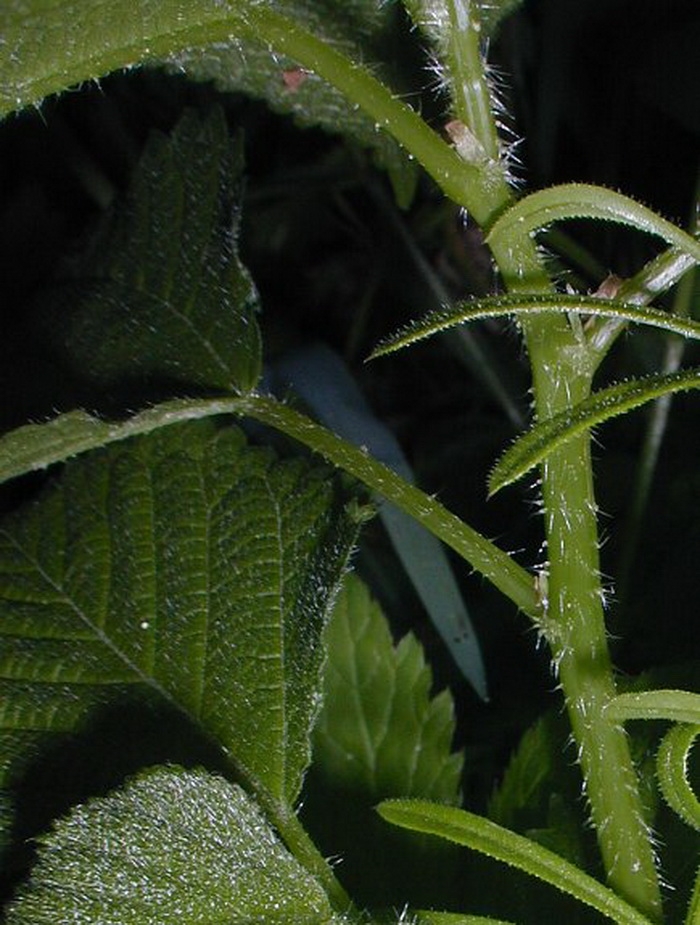
Range & Habitat: The native Wood Nettle is common in central and northern Illinois, but it is uncommon or absent in parts of southern Illinois (see Distribution Map). Habitats include moist floodplain woodlands, moist bottomland woodlands, mesic woodlands, shady seeps, and other moist places in wooded areas. Various deciduous trees (e.g., elms, maples, or sycamore) dominate the habitats where the Wood Nettle occurs.
Faunal Associations: The caterpillars of the following butterflies feed on the foliage: Polygonia comma (Comma), Polygonia interrogationis (Question Mark), and Vanessa atalanta (Red Admiral). Other insect feeders include caterpillars of the moths Bomolocha edictalis (Large Bomolocha) and Bomolocha sordidula (Sordid Bomolocha), leaf-mining larvae of the fly Agromyza subnigripes, and the stink bug Proxys punctulatus. White-tailed Deer also browse on the foliage of Wood Nettle occasionally, notwithstanding the stinging hairs. When this plant forms dense colonies in wooded areas, it provides valuable cover for wildlife.

Photographic Location: A floodplain woodland in Vermilion County, Illinois. The Wood Nettle in the photographs wasn't in bloom.
Comments: This native plant is often mistaken for the introduced Urtica dioica (Stinging Nettle). Both species have stinging hairs and a similar appearance. However, the Wood Nettle has some alternate leaves, while Stinging Nettle has pairs of opposite leaves only. There are also differences in the characteristics of their flowers. Another similar species, Boehmeria cylindrica (False Nettle), also has opposite leaves, but it lacks stinging hairs altogether. Like other members of the Nettle family, the Wood Nettle lacks showy flowers because they are wind-pollinated, rather than pollinated by insects. Some people may regard this species as an undesirable woodland weed because of its stinging hairs and unassuming appearance, but it is an important host plant of some native butterflies.
The male flowers occur in branching cymes from the axils of the leaves. These cymes spread outward from the stem and they are about the same length as the petioles of the leaves. Each male flower is greenish white to white and less than 1/8" (3 mm.) across, consisting of 5 narrow sepals, 5 stamens, and no petals. The female flowers occur in branching cymes toward the apex of the plant. These cymes are erect to spreading and 4" or more in length. Each female flower is more or less green and about 1/8" (3 mm.) across, consisting of 4 sepals of unequal size (2 large and 2 small) and an ovary with a long style. The blooming period usually occurs during mid- to late summer. The flowers are wind-pollinated. Each female flower is replaced by a small dry fruit that is curved and ovoid in shape. This plant often forms colonies of variable size.
Cultivation: The preference is partial sun to medium shade, moist conditions, and a fertile loamy soil with abundant organic matter. Because of its stinging hairs and tendency to spread, you probably would not want to cultivate this plant near the house, except possibly as a privacy barrier.

Range & Habitat: The native Wood Nettle is common in central and northern Illinois, but it is uncommon or absent in parts of southern Illinois (see Distribution Map). Habitats include moist floodplain woodlands, moist bottomland woodlands, mesic woodlands, shady seeps, and other moist places in wooded areas. Various deciduous trees (e.g., elms, maples, or sycamore) dominate the habitats where the Wood Nettle occurs.
Faunal Associations: The caterpillars of the following butterflies feed on the foliage: Polygonia comma (Comma), Polygonia interrogationis (Question Mark), and Vanessa atalanta (Red Admiral). Other insect feeders include caterpillars of the moths Bomolocha edictalis (Large Bomolocha) and Bomolocha sordidula (Sordid Bomolocha), leaf-mining larvae of the fly Agromyza subnigripes, and the stink bug Proxys punctulatus. White-tailed Deer also browse on the foliage of Wood Nettle occasionally, notwithstanding the stinging hairs. When this plant forms dense colonies in wooded areas, it provides valuable cover for wildlife.

Photographic Location: A floodplain woodland in Vermilion County, Illinois. The Wood Nettle in the photographs wasn't in bloom.
Comments: This native plant is often mistaken for the introduced Urtica dioica (Stinging Nettle). Both species have stinging hairs and a similar appearance. However, the Wood Nettle has some alternate leaves, while Stinging Nettle has pairs of opposite leaves only. There are also differences in the characteristics of their flowers. Another similar species, Boehmeria cylindrica (False Nettle), also has opposite leaves, but it lacks stinging hairs altogether. Like other members of the Nettle family, the Wood Nettle lacks showy flowers because they are wind-pollinated, rather than pollinated by insects. Some people may regard this species as an undesirable woodland weed because of its stinging hairs and unassuming appearance, but it is an important host plant of some native butterflies.
0
0





